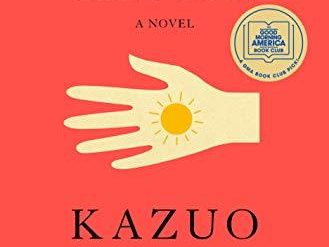
Estimated reading time: 6 minutes
Demography is destiny. Viewed from the broadest perspective, history chronicles the growth and spread of the human race throughout the most distant points on the globe. Over time, we observe the shifting ethnic boundaries, the accretion of knowledge, the building of ever-larger settlements, and the conflicts that have arisen as men have clashed in the quest for wealth and power over one another. And nowhere is this story more dramatic than in India. The brilliant Indian-American physician and novelist Abraham Verghese illuminates this history in his multi-generational saga of one remarkable Indian family from 1900 to 1977, The Covenant of Water.
Tracing India’s history through a village’s growth into a city
Now the country’s 1.4 billion people make it the most populous on the planet. But at the turn of the twentieth century India was home to just eighty million people. And as they spread and multiplied throughout the subcontinent in the course of the century, they witnessed cataclysmic changes wrought by ethnic and religious conflict, war, famine, and the gradual diffusion of education and knowledge. In The Covenant of Water, Verghese follows the growth of a small town named Parambil from its beginning as a single farm—and the human drama that unfolded there. So, it’s no surprise that the New York Times would call the novel “grand, spectacular, sweeping and utterly absorbing.” And the Guardian referred to it as “enthralling” and “riveting.”
The Covenant of Water by Abraham Verghese (2023) 736 pages ★★★★★

A medical mystery at the heart of this story
The Covenant of Water opens as the twentieth century dawns. We meet the woman who came to be called Big Ammachi (Elder or Honored Mother in the local language). Then, as a terrified twelve-year-old girl, she meets her new husband, a forty-year-old widowed farmer, at their wedding. But she will grow to love him, as she bears two living children over the years. First, a girl called Baby Mol who proves never to outgrow the mental age of five; she retains the name throughout her life. And, second, a bright boy named Philipose.
As they grow up, their father systematically expands his farm, Parambil, into a village. And that village will eventually become a small town. The family prospers. But, like his big sister, Philipose has been born with a “condition” that sets him apart from others: he has a deathly fear of water, a condition that has proven lethal to many of his relatives when they drowned in encounters with rivers and streams. No one understands why. And that medical mystery lies at the heart of this novel.
Over the three-quarters of a century that pass in the course of the story, three heroic physicians do their utmost to solve the mystery of Philipose’s condition. And it is only late in the tale that we finally witness one of them come up with an explanation. It’s a deeply moving tale and a heart-warming testament to the triumph of modern medical science.
About the setting
Most of the action in The Covenant of Water unfolds in the princely domain of Travancore in what is today the state of Kerala on India’s tropical southwest coast. The riverside settlement of Parambil that is the tale’s center of gravity is fictional. But the city of Cochin (today Kochi) in Kerala and Madras (Chennai today) on the southeastern coast) are very real indeed. Chennai is India’s fourth most populous city, with a metropolitan population of twelve million. Verghese’s characters spend time in both cities.
The dominant language of Kerala is Malayalam, but English is also widely spoken there today. English is one of the country’s two official languages. Malayalam, by contrast, is one of twenty-two scheduled languages that are also, in a sense, official. Most of the thirty-five million people of the state are Hindu, but, as the novel suggests, there is also a substantial community of St. Thomas Christians, who trace their origins to Thomas the Apostle, who landed in the region in the first century CE to evangelize. Today they number about four million.
The state of Kerala is best known to Western historians as the site of the world’s second democratically elected Communist government (after San Marino). The Communist Party of India governed the state from 1957 to 1959, as Verghese’s account reveals. A decade later revolutionary Maoists called Naxalites came together in the eastern state of Orissa (now Odisha) and began spreading through the country. As you will see upon reading the novel, the Naxalites play a significant role in the lives of Verghese’s characters.
About the author

Abraham Verghese is a professor of medicine at Stanford University Medical School and the author of four bestselling books, two memoirs and two novels. He was born in Addis Ababa, Ethiopia, in 1955 to Christian parents from Kerala, India, who worked as teachers. He has two brothers, one who is a professor of engineering at MIT, the other who works at Google. Verghese has three children, two grown sons by his first marriage and a third by his second marriage.
As the New York Time‘s reviewer wrote (May 2, 2023), “Abraham Verghese occupies a curious place in the modern literary landscape. A doctor who decided midcareer to train at the Iowa Writers’ Workshop, he has gone on to achieve distinction in both fields. He is a professor of the theory and practice of medicine at Stanford Medical School, continues in clinical practice, has won the National Humanities Medal, speaks widely about the importance of the human element of what has become a technocratic practice, and has won awards for both fiction and nonfiction. His last novel, ‘Cutting for Stone,’ spent more than two years on this newspaper’s best-seller list.”
For related reading
I’ve also reviewed the author’s debut novel, Cutting for Stone by Abraham Verghese (A deeply affecting medical drama set in Ethiopia).
This is one of The 21 best books of 2023.
For another novel set in the Indian state of Kerala, see Between the Assassinations by Aravind Adiga (India’s diversity under a microscope).
You might also care to check out:
- Good books about India, past and present
- 20 most enlightening historical novels
- Top 10 great popular novels
- Science explained in 10 excellent popular books
And you can always find my most popular reviews, and the most recent ones, on the Home Page.



























